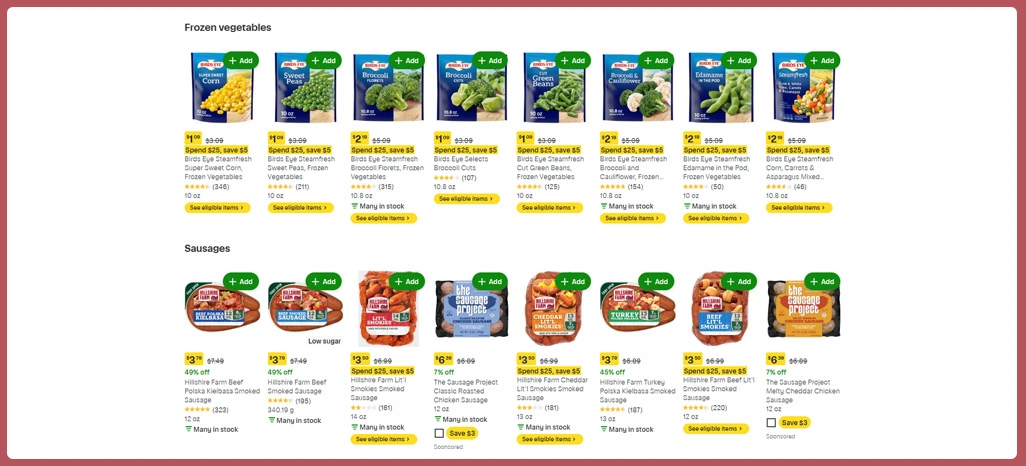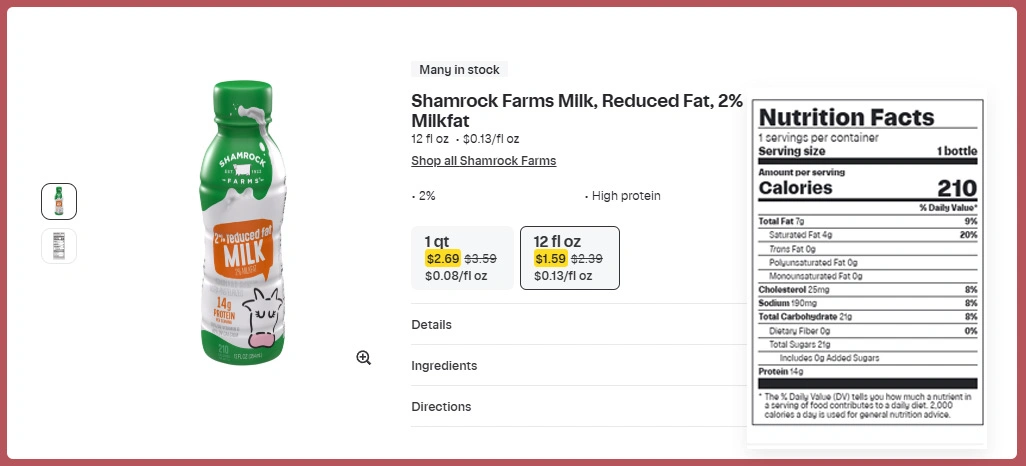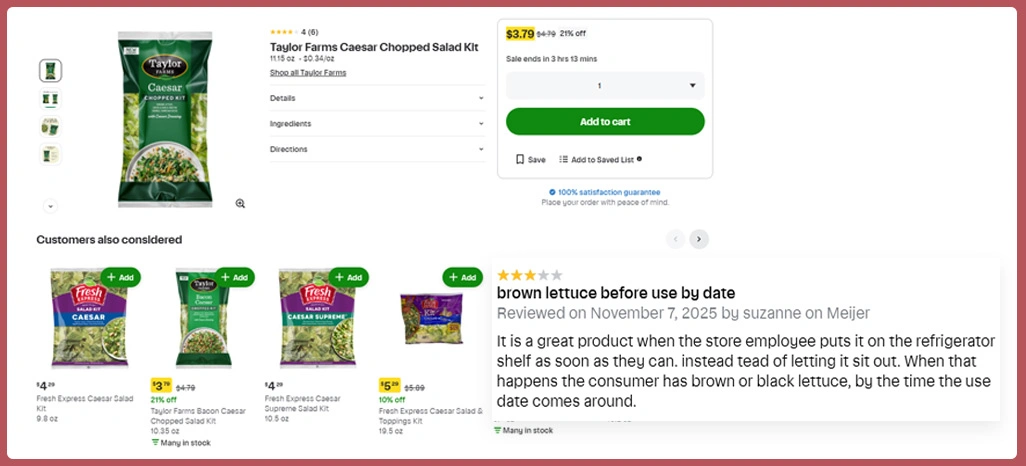How to Use Price Intelligence in Quick Commerce to Reduce Costs by 27% and Boost Margins?

Introduction
Quick commerce has transformed retail expectations by offering rapid delivery, competitive selections, and seamless digital convenience. However, with rising operational expenses, volatile customer preferences, and margin pressure, companies require a sharper analytical approach to remain profitable. This is where Price Intelligence in Quick Commerce becomes essential, helping businesses overcome inefficiencies that drain profitability.
A well-planned pricing framework allows operators to adjust catalog pricing with precision, identify margin leakage, and improve competitive positioning. The ability to evaluate competitor movements, monitor discount fluctuations, and detect unusual pricing shifts empowers teams to make informed decisions at scale. This reinforces stability in fast-moving environments where speed and accuracy directly influence the bottom line.
Companies increasingly rely on real-time data tracking to understand how customer purchasing patterns correlate with pricing accuracy. Whether they are assessing SKU-level performance or aligning costs with demand signals, a structured intelligence approach ensures each pricing revision supports long-term growth.
Evaluating Pricing Behaviors to Improve Consumer Response Patterns

Understanding how customers react to pricing adjustments is essential in the fast-moving quick commerce environment, where buying decisions shift rapidly across regions, categories, and time frames. When businesses evaluate product-level variations, they can reduce unnecessary markdowns, prevent margin loss, and refine assortment strategies.
Growing adoption of structured data frameworks helps teams detect performance gaps early. For instance, companies often discover that certain SKUs underperform not due to product relevance but because pricing misaligns with competitor positioning. Additionally, leveraging Quick Commerce Data Scraping ensures decisions are supported by current market conditions instead of outdated assumptions, strengthening overall pricing consistency.
Tracking factors such as Real-Time Discount Monitoring and competitor fluctuations through Price Comparison Tools for Quick Commerce helps identify patterns that influence real purchasing outcomes. These insights highlight which products require selective adjustments and which need strategic repositioning.
Key Insights That Influence Pricing Outcomes:
| Insight Area | Impact on Performance |
|---|---|
| Customer Price Sensitivity | Enables localized pricing adjustments |
| SKU Sales Variability | Helps refine category strategy |
| Promotional Volatility | Reduces unnecessary markdowns |
| Competitor Activity Tracking | Improves pricing responsiveness |
Over time, structured insight adoption ensures greater pricing accuracy and smoother decision flows. This stability also supports scalable evaluation frameworks for diverse product mixes, especially when aligned with Price Intelligence Solutions for Fmcg Retailers to strengthen high-turnover categories.
Strengthening Operational Efficiency Through Strategic Pricing Adjustments

Operational efficiency becomes more measurable when pricing decisions align with fulfillment capacity, demand cycles, and inventory behavior. Quick commerce operators must understand how backend processes interact with real-time market conditions to support consistent revenue performance.
The use of Dynamic Pricing Insights allows teams to adjust their strategies based on verified indicators instead of intuition. These signals help operators anticipate competitor movements, identify timing patterns, and detect category-level shifts. As companies strengthen their internal pricing models, they reduce waste caused by delayed updates and maintain stable margins across high-demand periods.
Applying Improving Profit Margins Using Pricing Analytics ensures businesses can track how pricing influences operational behavior at scale. From delivery capacity to fulfillment constraints, every operational activity benefits from data-informed adjustments. Additionally, implementing SKU-Based Profit Margin Optimization allows teams to detect under-earning items and correct imbalances before they impact broader profitability.
Operational Metrics Connected to Pricing Impact:
| Metric | Influence on Operations |
|---|---|
| Inventory Turnover Rates | Prevents excess stock buildup |
| Demand Timing Accuracy | Improves order management |
| Category Stability Levels | Reduces volatility |
| Revenue Predictability | Enhances planning accuracy |
This structured approach further strengthens dark-store performance, supported by Real-Time Price Intelligence for Dark Stores, ensuring hyperlocal hubs maintain maximum operational efficiency and balanced workflow distribution.
Building Competitive Advantage Through Refined Benchmarking Processes

Benchmarking plays a significant role in understanding how product visibility and pricing alignment influence sales outcomes in quick commerce. With consumers frequently comparing platforms before finalizing their choices, competitive positioning becomes a critical element in ensuring SKU-level consistency. When brands evaluate competitor movements alongside internal pricing history, they begin to identify performance discrepancies that directly affect revenue.
A structured benchmarking approach also provides actionable insight into how pricing shifts shape customer preferences across various regions. By studying long-term patterns, operators can distinguish temporary competitor strategies from enduring market trends. This prevents unnecessary reactive decisions and supports more stable planning.
Integrating insight-driven systems ensures that pricing adjustments remain aligned with performance goals rather than short-term assumptions. Teams can monitor how product movements change over time and evaluate how competitive signals influence future outcomes. This consistency supports improved alignment between real-time conditions and planned pricing strategies across multiple fulfillment zones.
Benefits of Applying Structured Benchmark Analysis:
| Benefit | Result |
|---|---|
| Competitive SKU Comparison | Enhances catalog balance |
| Market Movement Tracking | Guides smarter revisions |
| Conversion Pattern Evaluation | Improves engagement |
| Margin Preservation Support | Reduces unnecessary losses |
By incorporating Quick Commerce Price Intelligence into benchmarking workflows, businesses build stronger pricing foundations and achieve more sustainable revenue performance throughout fluctuating market cycles.
How Retail Scrape Can Help You?
Businesses aiming to build an optimized pricing ecosystem often require structured intelligence support to improve decision accuracy. Our advanced solutions help companies strengthen their analytical foundation, and the detailed insights we provide incorporate Price Intelligence in Quick Commerce into real-time operational workflows.
Our Key Support Capabilities:
- Real-time evaluation of active catalog changes.
- Automated tracking for competitor movements.
- Deep SKU-based performance assessment.
- Comprehensive pricing pattern analysis.
- Forecasting support for promotional shifts.
- Integration-ready structured data delivery.
Our capability-driven approach supports operational clarity while reinforcing long-term sustainability. As businesses scale, structured insights provided by our platform help refine product categories, improve pricing consistency, and support Price Intelligence Solutions for Fmcg Retailers during high-demand cycles.
Conclusion
Building a resilient pricing strategy requires consistent evaluation, structured insights, and actionable data models. Companies benefit significantly when refined analytics guide their decision-making, and integrating Price Intelligence in Quick Commerce empowers teams to reshape their operational approach with greater confidence.
When businesses apply structured intelligence frameworks supported by Real-Time Price Intelligence for Dark Stores, they maintain stability amid constant market fluctuations. Contact Retail Scrape today to elevate your pricing foundation with data-driven precision.


